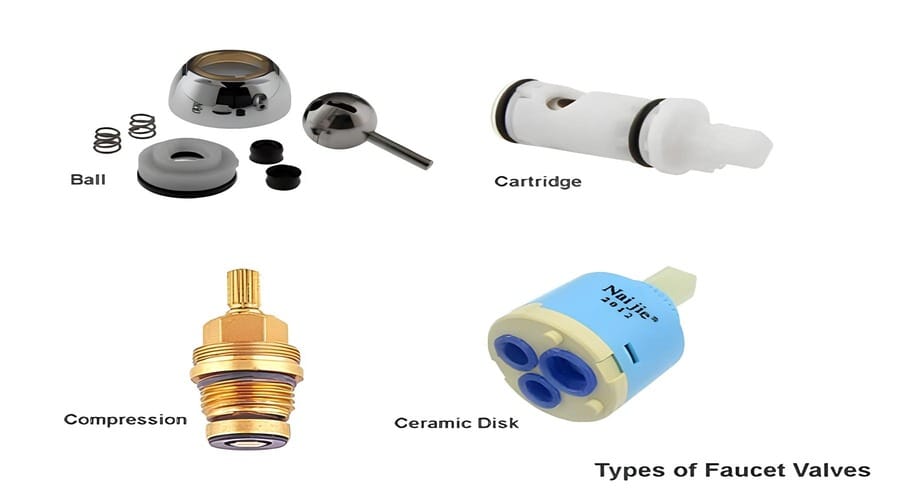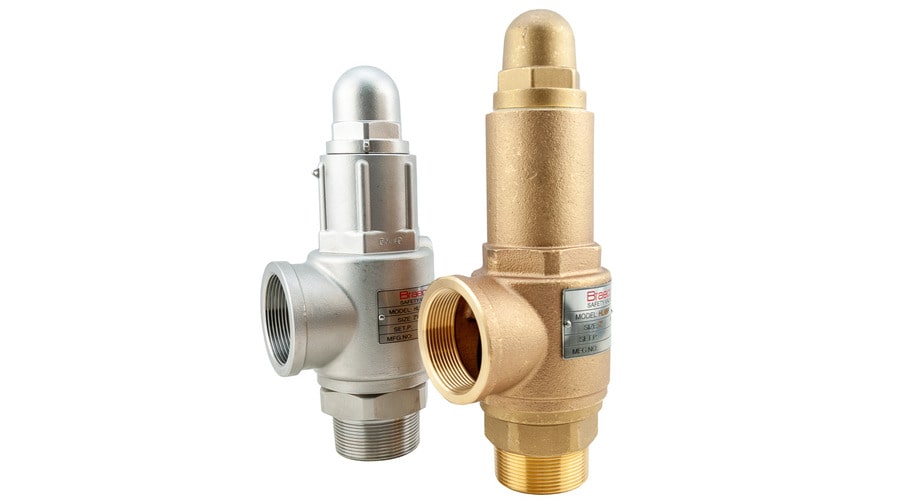This guide will discuss the different water valve types. Most water valves function to restrict water passage through pipes completely or partially. Numerous forms of water valves are available.
Placement and function determine the majority of differences. The designers create a specific faucet valve type to restrict water flow through the faucet. A butterfly valve is a complex device used on large-scale pipelines, not in residential buildings.
However, it is hard to distinguish different water valve types. This in-depth knowledge of the functions and aesthetics of different plumbing valve types can be acquired.
What Is a Water Valve?
The term “water valve” refers to a specific kind of fitting used in pipes for controlling the flow of water. Installing water valves in pipes allows for the short- or long-term control of water flow. Industrial and domestic water control valves come in various sizes, types, and functions.
Most building water circulation and control valves are residential types of plumbing valves. But, a valve regulates the flow of liquids and gases in a manufacturing facility. Each type of water valve has its purpose.
Water valves regulate water pressure and prevent backflow. They are essential in industrial and residential settings.
1. Type of Plumbing Water Valve: Gate Valve

People use gate valves in homes and plumbing to control water flow. America patented gate valves in 1839.
People use it for different things, such as stopping water, separating areas, and managing hot water tanks. When you lower the interior gate of a gate valve, you can decrease or completely block the water flow.
These valves in plumbing allow users to control the exact amount of water instead of opening or closing them. Gate valves are suitable for homes with water hammer problems. They can open and close in a controlled way.
The stem and valve nut might become loose with extensive usage, causing leaks, so be careful. If you never use it, the valve may seize and become inoperable.
Suitable For: Gate valves, a type of residential water valve, have many applications. It includes main water shutoff valves, isolation valves, and hot water tank valves.
2. Globe Valve

Globe valves are suitable for water lines that are 1 inch or bigger but not for 1/2-inch or 3/4-inch water lines. In general, these types of valves in plumbing are large in size compared to plumbing gate valves.
This is due to their massive internal construction. They have a stopper equipped on them. Turning the valve handle can either partly block or completely stop things from going through a horizontal baffle.
Globe valves, like gate valves, are an excellent choice for users who need reliable water flow regulation. You can adjust the plug to control water pressure in homes prone to this problem, preventing sudden changes.
Globe valves are substitutes for gate valves in extensive residential plumbing lines. Their primary function is to reduce water hammer issues.
3. Types of Water Valves: Check Valve

A check valve can block water flow differently than a regular valve. However, it is still vital in the piping system. This type of water valve only allows water to pass through the inlet part by design.
The valve prevents any reduction in water pressure by pushing open a hinged disk with the force of the incoming water. However, water cannot pass through the valve in the opposite direction. This is because any force applied to the hinged disk closes the disk.
Backflow in the plumbing system causes cross-contamination issues in different plumbing appliances. The routine use of check valves prevents it.
Backflow can occur when the internal pressure of a water tank, pump, or sprinkler system. It is diminished than the external pressure of the main water system. A check valve installation can avert this problem.
Ideal For: Check valves are ideal for preventing backflow in sprinkler systems. It is also useful in pumps and safety applications. It is also used in residential plumbing systems where continuous or irregular backflow occurs.
For a complete guide about check valves, read What Are Check Valves
4. Plumbing Ball Valve

Ball valves are another common type of water valve found in residential plumbing systems. In contrast, these valves exhibit higher reliability and resistance to seizing and leakage than gate valves. Gate valves offer better long-term water flow accuracy control than other valves.
A mechanism with a 90-degree rotating range composes ball valves. This mechanism manages the hollow half-sphere. When the lever aligns with it, it retracts the half-sphere, allowing water to pass through the valve completely.
When you position the fulcrum perpendicular to the valve, it completely obstructs the water flow. Turning the water on and off is easy, but regulating the flow becomes challenging.
Ideal For: Residential plumbing uses plumbing ball valves instead of gate valves. Ball valves offer excellent stability and ease of use.
Read What Is a Ball Valve for more details about the ball valve’s application, parts, and working mechanism.
5. Butterfly Valve

The term “butterfly” comes from these valves, including a rotating disk. The disc resembles a butterfly. It has a thick center that holds the valve stem.
Additionally, it has thin wings or fins on each side. Turn the lever to rotate the disk and block or reduce water flow through the valve.
Since these valves are installed on water pipelines with a diameter of at least 3 inches, they are rarely seen in residential plumbing. These valves are more expensive than other residential plumbing valves because of their design and size.
Due to their large dimensions, butterfly valves are suitable for pipe use in the commercial and industrial sectors. They are employed in typical residential settings.
6. Faucet Valve

Another type of water valve is a faucet-type valve, which regulates the water movement through a toilet, shower, or faucet. Despite their standard function, these valves are available in various designs. Compression valves, cartridges, ball valves, and ceramic discs are some varieties.
- Cartridge valves are employed in showers to regulate water flow. It uses a rotating mechanism that opens or closes the conduit leading to the showerhead.
- Ball valves are uncomplicated and reliable mechanisms that regulate the water flow. It leaves minimal space for flow control.
- Ceramic disc valves are composed of two ceramic disks. They operate in opposition to one another.
- Water can flow through the valve when the apertures in the upper and lower disks are in alignment. But, if the apertures become misaligned, they impede or completely halt the water flow.
- Compression valves seal an opening called the valve seat with a rod and gasket.
Ideal For: This valve controls water flow at faucets and appliance pipes.
7. Pressure Relief Valve (PRV)

A pressure relief valve is a plumbing fixture known as a valve. It operates differently compared to a regular water valve. When the pressure within a water system becomes high, a pressure relief valve protects the system. It discharges vapor and hot water rather than restricting or preventing the passage of water.
We install these plumbing valves on hot water containers. These prevent breakage, deformation, and overheating caused by excessive pressure.
The valve houses a spring mechanism that compresses in response to extreme pressure. The spring’s compression activates the valve. It allows steam and water to escape, thus reducing or minimizing the system’s pressure.
The pressure relief valve protects the plumbing system of a household. Users can decrease the pressure within the hot water tank by installing one.
What Material Do Manufacturers Use For Different Types Of Water Valves?
When producing water valves of superior quality, valve manufacturers pay close attention to various details. The materials utilized are of significant importance across the manufacturing process. But, many factors depend upon them.
Reliable valve manufacturers and water valve suppliers are attentive to the risks associated. They remain careful when handling high-pressure water or any other gas or liquid supply. In other words, many risk factors are reliant on these valves. So, we craft them using sustainable materials.
Recognized water valve manufacturers usually use premium materials. These are alloy steel, ductile iron, stainless steel, brass, bronze, or other materials. These materials are durable, non-corrosive, and secure for installation with ample supplies.
Materials such as stainless steel protect components like the body, gates, and disc from corrosion. Ductile iron, cast iron, and steel are extra alloys with comparable efficiency. These have less reactivity and resistance to corrosion.
To Wrap Up With Different Types of Plumbing Valves
This post addressed different types of water valves used in the water supply. Also, we have described the primary elements and functions of operated valves. For instance, people know the ball and gate valves as water supply valves.
You will be able to distinguish between different types of water valves. This post will help you determine which valve is suitable for your application.
Moreover, when buying water plumbing valves, identifying reputable valve manufacturers and wholesalers can be challenging. Once you find it, you will resolve over fifty percent of your issues.
Plumberstar, a trusted Chinese plumbing valves manufacturer and supplier, serves all types of residential properties. Plumberstar has gained attention for its innovative production technology, commitment to quality, and fast deliveries. It helps in ensuring the safety of residential water supply lines.
Plumberstar is an industry leader in the production and distribution of a variety of plumbing valves. It manufactured actuated, ball, angle, butterfly, residential check valves, gate valves, etc.
